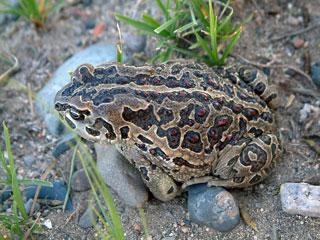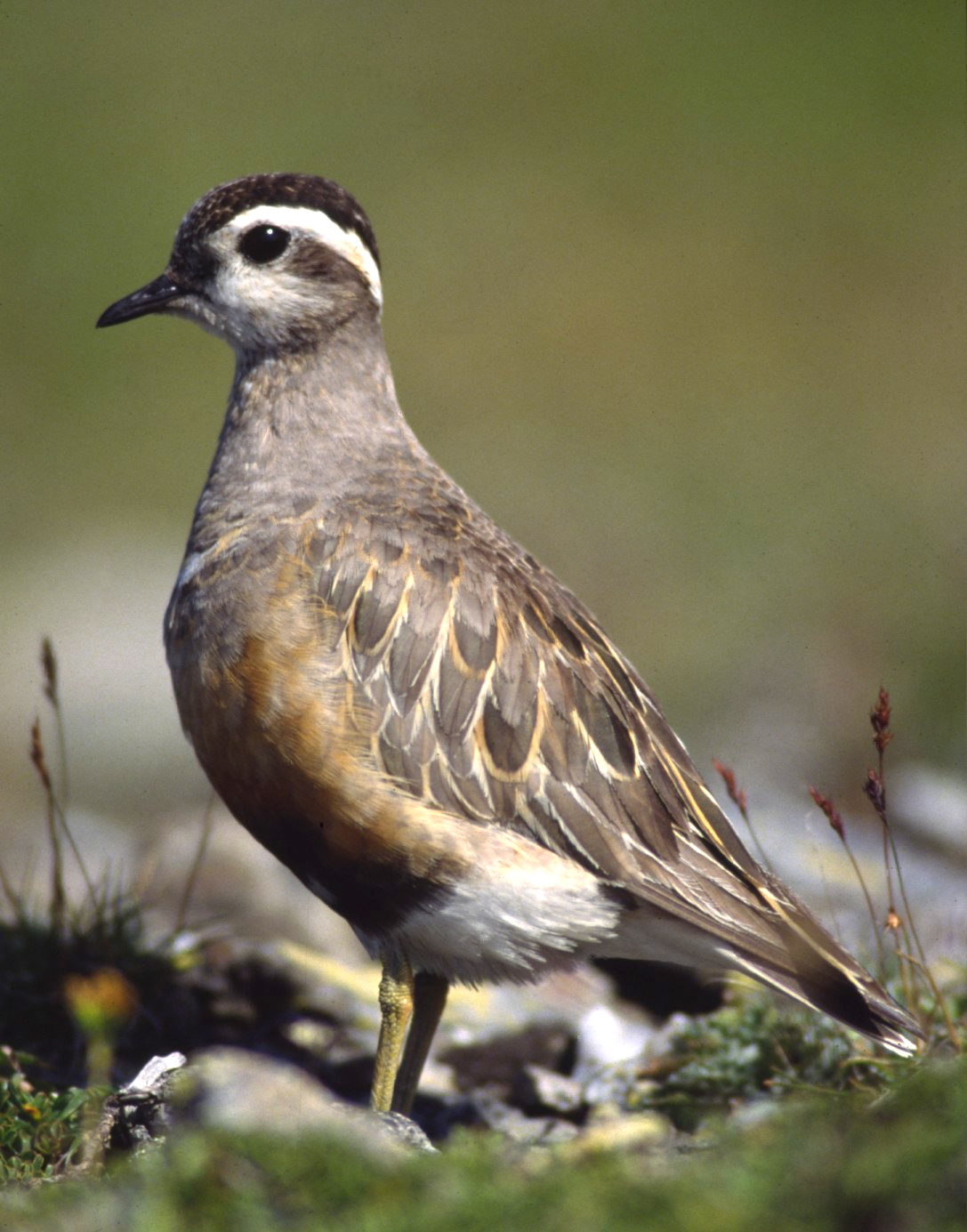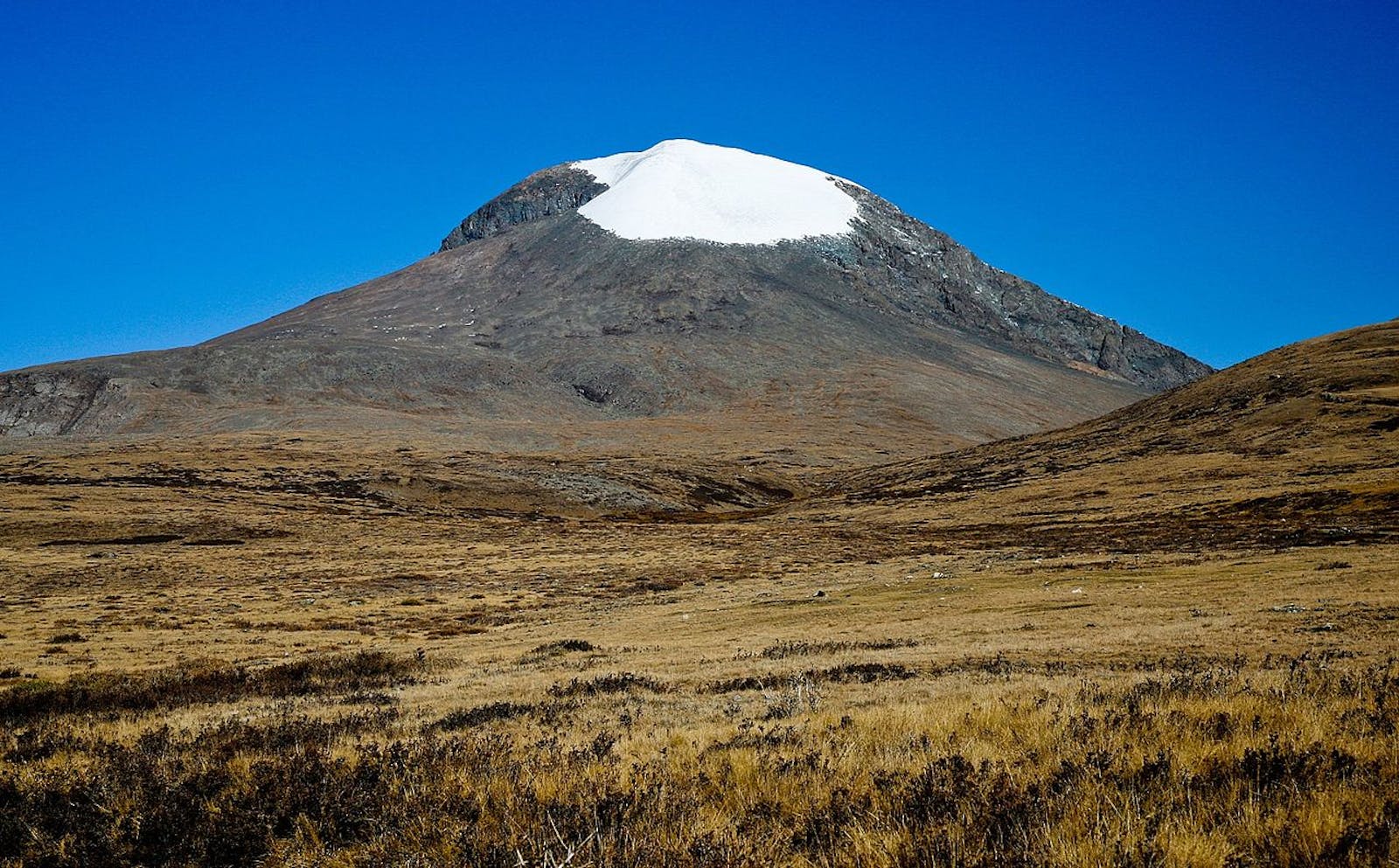Khangai Mountains Alpine Meadow
The ecoregion’s land area is provided in units of 1,000 hectares. The conservation target is the Global Safety Net (GSN1) area for the given ecoregion. The protection level indicates the percentage of the GSN goal that is currently protected on a scale of 0-10. N/A means data is not available at this time.
Bioregion: Mongolian Grasslands, Alpine Meadows & Forest Steppe (PA44)
Realm: Eastern Eurasia
Ecoregion Size (1000 ha):
3,715
Ecoregion ID:
755
Conservation Target:
87%
Protection Level:
4
States: Mongolia
Vast skies stretch over snow-capped mountains and colourful alpine meadows in this ecoregion which is located in the heart of Mongolia. Encompassing the highest elevations of the spectacular Khangai mountain range, an array of habitats from rocky slopes to high mountain steppe can be found. Siberian ibex traverse narrow rocky ledges, Mongolian marmot burrow under the expansive grasslands, and the snow leopard maintains its elusive reputation across much of the area.
This ecoregion encompasses a mosaic of habitats at the highest altitudes of Mongolia’s central Khangai mountain range. Averaging around 2,000–2,500m with most peaks around 3,200–3,500 m, the region also includes central Mongolia’s highest mountain—Otgontenger—where snow is a permanent feature of the 4031 m summit. Springs dotted across the Khangai range mark the rise of several of Mongolia’s rivers which feed into vast lakes below. Extremely cold winters and warm summers are typical in the ecoregion with average January temperatures lower than -20ºC and summer temperatures around 20ºC. The mean annual precipitation is over 400 mm.

The flagship species of the Khangai Mountains Alpine Meadow ecoregion is the Tengger desert toad. Image credit: Spangenberg, Zooiterliste
Ranging from steppe to taiga and alpine vegetation, the Khangai mountains support a rich variety of plant species. Above the tree line at 2,350–2,800m, high mountain meadows form with short bushes, lichens, mosses, and occasional pine and larch all found between the rocky peaks. Typical grass species include creeping foxtail and Chinese lyme grass, and shrubs such as dwarf birch, shrubby cinquefoil and Cotoneaster uniflora can all be found. With their bright flowers, Rosebay willowherb, garland larkspur, Asian Globeflowers, and Hesperis sibirica provide a burst of colour to the meadows, as does the milkwort Lancea tibetica and the medicinal yellow pasqueflower.
Characteristic mammals in the region include mountain hares, root voles, lynx, and the Korean field mouse, whilst Siberian ibex, Pallas’ cat, and the near-threatened argali can be found at smaller numbers and across more limited ranges. Pallas’ pika and the endangered Mongolian marmot are both endemic to the wider region and spend much time burrowing beneath the surface. Known in Mongolia as ‘irbis’ or ‘irvis’ is the region’s arguably most enigmatic species—the snow leopard—which preys on Siberian ibex inhabiting rocky slopes across the mountains.
Reptile and amphibian species include steppes rat snakes, Asian vipers, Mongolian toads, and the northernmost populations of the Tengger desert toad. Avifauna includes the Altai snowcock, swan goose, and Saker falcon. Other bird species include the regionally endemic and threatened Mongolian accentor, and the vulnerable white-throated bushchat, which maintains one of its last strongholds in the Khangai range.
Due to the cold, arid climate across much of Mongolia, very little crop production or forestry occurs, and in the Khangai alpine meadows, the main land use is livestock husbandry. The Khangai mountains are also a site of national religious importance, including Otgontenger which is one of the country’s sacred mountains and on which a climbing ban was implemented in 2015 due to safety concerns. Several protected areas in the region cover 34.1% of land, the largest of which is Khangaii Nuruu which also the contains one of the country’s oldest Buddhist monasteries, Tövkhön Khiid. Several Important Bird Areas also exist in the region.
Although Mongolia is a country with a long history and tradition to conserve nature, biodiversity in this ecoregion faces a number of threats. Overgrazing by livestock has led to significant degradation in lower parts of the region, and competition for food with domesticated mammals has led to the displacement of wild species such as the argali. Ibex living in this region have also been displaced by nomadic pastoralist but to a lesser extent owing to their occupation of more precipitous and less accessible terrain.

Eurasian dotterel. Image credit: Creative Commons
Climate change has further contributed to the decline of habitats in the region and poaching threatens the dwindling populations that remain, affecting species such as argali, ibex, and snow leopards. Significant conservation efforts have been made to protect snow leopards across Mongolia, including anti-poaching measures, attempts to reduce conflict with herders, and community engagement programmes to raise awareness about the species and its habitat.
Priority conservation actions for the next decade will be to: 1) undertake large-scale restoration efforts on degraded areas of meadow; 2) continue with international efforts to protect snow leopard populations in the ecoregion and surrounding areas; and 3) work with local pastoralist groups and offer incentives for non-agricultural outputs to prevent further expansion of livestock herds.
Citations
1. Ariuntsetseg, L. et al. (2008). ‘Main Habitats and Floristic Diversity in the Tarvagatai Nuruu National Park – General View’ Mongolian Journal of Biological Sciences. Vol. 6(1-2): 11-20. Available from: http://greenmongolia.mn/wp-content/uploads/2019/08/mjbs006-01-02-02.pdf [Accessed 22/12/2019].
2. Nyamtseren, M. (2014). ‘The land degradation and desertification process in Mongolia’. Mongolia second assessment report on climate change. [Online]. Available from: https://www.researchgate.net/publication/296307646_The_land_degradation_and_desertification_process_in_Mongolia. [Accessed 22/12/2019]
3. Ministry of Environment and Green Development Mongolia (2013) ‘National Snow Leopard Ecosystem Protection Priorities 2014-2021’. [Online]. Available from: http://www.globalsnowleopard.org/wp-content/uploads/2016/05/Mongolia_NSLEP.pdf [Accessed 22/12/2019]

.png?auto=compress%2Cformat&w=300)

